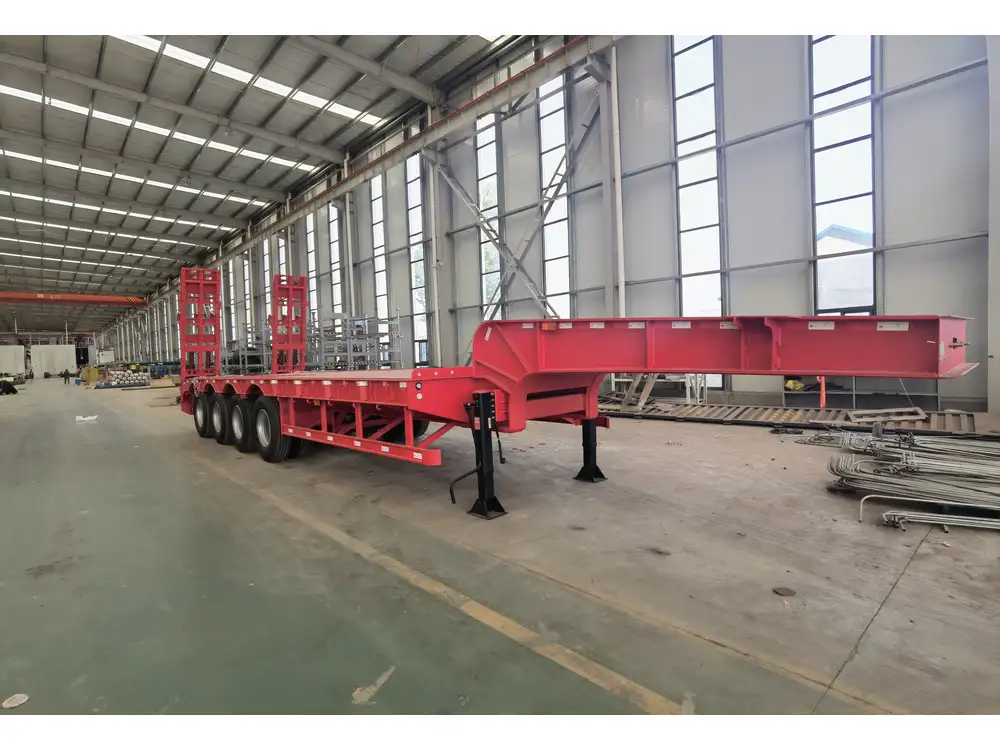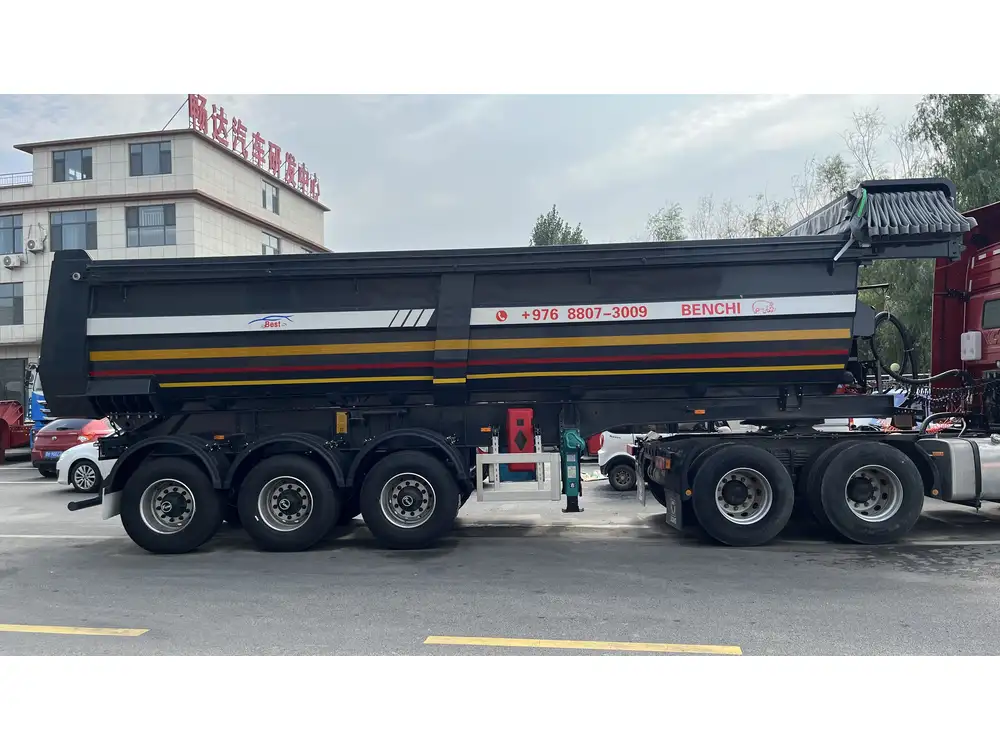When it comes to operating semi-trailers, one of the frequently overlooked aspects is the weight of the doors. While it might seem trivial compared to the overall trailer weight, understanding how much a semi-trailer door weighs can significantly influence load management, fuel efficiency, and safety. In this article, we will thoroughly explore the factors influencing semi-trailer door weight, present comparisons of different door types, and tackle the implications these weights have on your operations.
The Basics: What Is a Semi-Trailer Door?
Semi-trailer doors are essential components designed to secure loads during transit. These doors may vary in material, design, and functionality, impacting their overall weight. Recognizing the types of semi-trailer doors available can provide insight into their weight specifications.
Types of Semi-Trailer Doors
Swing Doors
- Typically used in flatbed trailers and some dry vans.
- Made from steel or aluminum, with weight varying based on design and additional features (such as locks).
Roll-Up Doors
- Common in box trailers and cargo vans.
- Usually lighter than swing doors, constructed from aluminum or composite materials.
Bi-Fold Doors
- Opening from the center, offering wide access.
- Weight varies depending on material choice and reinforcement.

Material Matters
The choice of material significantly affects the weight of semi-trailer doors:
| Material | Weight Range (lbs) | Durability | Usage |
|---|---|---|---|
| Steel | 150 – 300 | High | Heavy-duty applications |
| Aluminum | 70 – 150 | Moderate | Light to medium-duty trailers |
| Composite | 60 – 120 | Moderate to High | Specialized cargo needs |
How Much Does a Semi-Trailer Door Weigh?
The weight of a semi-trailer door typically ranges from 70 to 300 pounds, depending on the type and material. To give you a better understanding, here are weight breakdowns for various door styles:
Swing Doors: Generally heavier, steel swing doors can weigh between 150 to 300 pounds, whereas aluminum alternatives are lighter, averaging around 100 to 200 pounds.
Roll-Up Doors: As the design focuses on convenience, the weight of roll-up doors usually falls between 70 to 150 pounds, depending on the material and construction quality.
Bi-Fold Doors: Their weight depends significantly on the reinforcement used; expect weights ranging from 100 to 250 pounds.
Weight specifications can vary based on several factors, including:
- Size of the Door: Larger doors naturally weigh more.
- Reinforcements and Features: Locks, handles, and other components can increase weight.
- Customizations: Specialized coatings or insulation can add additional pounds.
Factors Influencing Door Weight and What It Means for Your Operations
Understanding why the semi-trailer doors have their specific weights can aid operations managers and logistics professionals in optimizing their fleets.

Compliance with Regulations
Regulations often dictate maximum weight limits to ensure safety on public roads. The door weight contributes to the overall gross vehicle weight (GVW), which must comply with Federal Motor Carrier Safety Administration (FMCSA) regulations. This compliance is vital for avoiding fines and ensuring safety.
Impact on Fuel Efficiency
Every pound matters when it comes to fuel efficiency. Additional weight translates to higher fuel consumption. A heavier door increases the total vehicle weight, which can adversely affect fuel economy, thereby increasing operational costs.
Load Management
Accurate load calculations incorporate the weight of all trailer components, including doors. Knowing an accurate weight helps in distributing the load effectively, preventing axle overload, and ensuring safety.

Safety Considerations
It’s crucial to consider the safety implications of heavy doors. They require more force to open and close, and improper handling can lead to accidents. Operators need to be aware of door weight to avoid injuries caused by heavy swinging or rolling doors.
Comparisons of Semi-Trailer Door Weight With Other Components
Understanding how door weight relates to other trailer components can provide context in decision-making. Here’s a comparative table:
| Component | Typical Weight (lbs) | Remarks |
|---|---|---|
| Semi-Trailer Door | 70 – 300 | Heaviest among lightweight components |
| Trailer Frame | 2,000 – 5,000 | A crucial structural component |
| Axles | 750 – 1,500 each | Weight varies by axle configuration |
| Cargo Load | 5,000 – 40,000+ | Heaviest component in most cases |
As seen in the table, while the door weight is significant, it’s substantially lighter than the total trailer frame or cargo load. Understanding these dynamics can aid in strategic planning.
Optimizing Your Fleet: Practical Steps
To capitalize on understanding the semi-trailer door weight, here are several practical steps operators can implement:

1. Regular Weight Audits
Conducting regular audits of trailer components, including doors, helps maintain compliance and optimizes weight management strategies.
2. Employee Training
Training employees to handle doors correctly minimizes injury risks associated with operating heavy doors and helps ensure safety during operations.
3. Material Choices
Considering lighter materials or designs can reduce weight without compromising strength or durability. For instance, opting for an aluminum roll-up door can save significant weight compared to steel swing doors.

4. Frequent Maintenance
Regularly maintaining doors to ensure they function correctly can help avoid excessive wear that adds weight due to components becoming loose or needing replacement.
Frequently Asked Questions
How do I determine the weight of my existing semi-trailer doors?
To determine the weight of your doors, remove the doors and weigh them using a standard scale. For exact specifications, refer to the manufacturer’s manual or contact the manufacturer directly.

Are heavier doors necessarily a bad thing?
While heavier doors might contribute to overall vehicle weight, they can also translate to more durability and security. The key is to balance weight with performance needs.
Can customizing semi-trailer doors increase weight substantially?
Yes, adding insulation, additional locks, or protective coatings can increase the weight of the doors significantly. It’s essential to account for these factors when calculating total vehicle weight.
How does weather influence semi-trailer door functionality?
Weather can affect door materials, causing heavier doors to become cumbersome if moisture increases weight (especially with wood or composite materials). Regularly inspect and maintain the doors to mitigate issues.

Conclusion
Understanding the weight of semi-trailer doors is more than a trivial detail; it has implications for safety, fuel efficiency, and overall operations. By examining the types of doors in use, their material compositions, and the practical applications of their weights, operators can make informed decisions that positively affect their fleet management, ultimately leading to enhanced operational efficiency.
For insightful operational decisions, remember that weighing your semi-trailer door accurately can pave the way not only for compliance and safety but also for optimized performance across your trucking operations.



